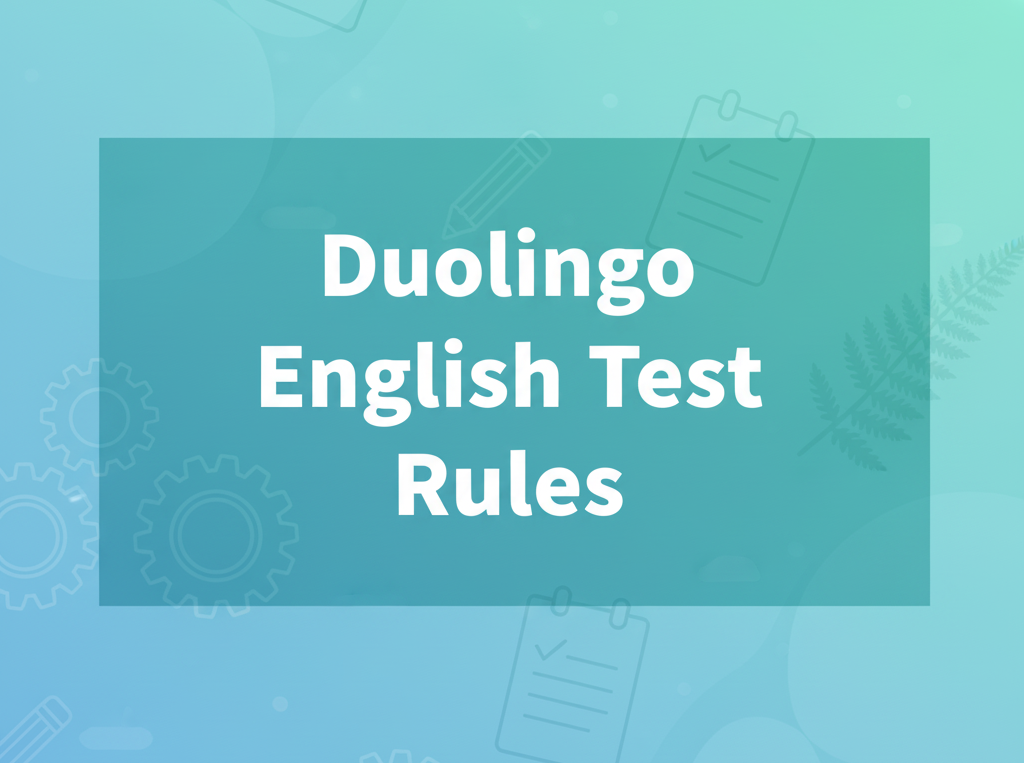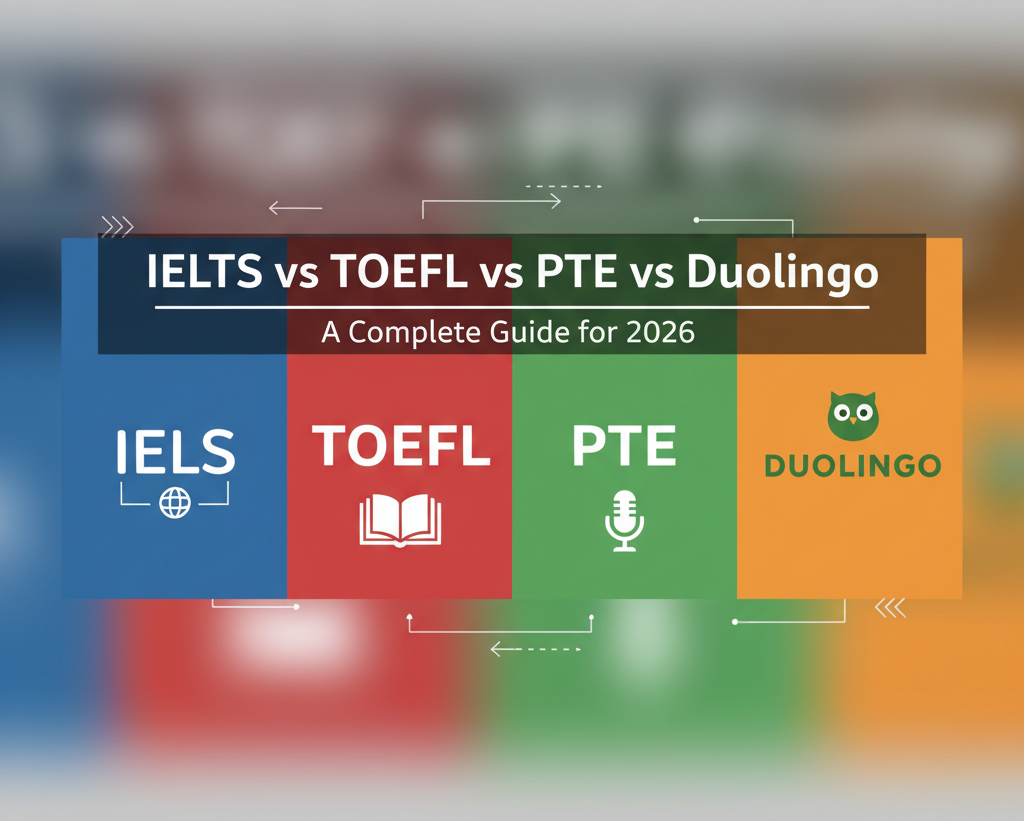Worried about running out of words or struggling to describe an image during the Duolingo English Test? From identifying key elements to structuring your response effectively, a little practice can go a long way in improving your performance.
In this guide, we’ll break down 9 expert Duolingo English picture description tips that will help you develop clarity, fluency, and confidence. Let’s dive in!
Why Picture Description Matters in the Duolingo English Test
The Picture Description tasks in the Duolingo English Test (DET) evaluate your ability to describe images accurately using proper vocabulary, grammar, and fluency. These tasks contribute to your Production score and test both speaking and writing proficiency.
What It Tests
Choose your dream country
When do you want to study abroad?
What's your highest level of education?
Select you current city
How Leap will help you
Personalised University Shortlist
Express Applications with Quicker Admits
End-to-End Application Support
- Fluency and clarity in both spoken and written formats
- Vocabulary richness and grammatical accuracy
- Ability to generate descriptive, logical responses
Task Types: “Speak About the Photo” vs “Write About the Photo”
- Speak About the Photo: You have 20 seconds to describe an image aloud.
- Write About the Photo: You must write a short description (at least one sentence) based on the given image.
AI Scoring: How Clarity, Fluency, and Relevance Are Evaluated
Duolingo’s AI evaluates responses based on:
- Pronunciation and enunciation for spoken tasks
- Grammatical accuracy and coherence for written tasks
- Content relevance—sticking to what is visible in the image
Expert Tip 1: Study the Image Carefully
Before speaking or writing, analyse the image thoroughly—identify key elements like people, actions, and setting to ensure a well-structured response.
What to Focus On:
- Foreground vs. background details
- People, objects, and actions
- Emotions, expressions, or interactions
Planning Strategy:
- 5-second scan: Identify key elements.
- 10-second structuring: Organise your response into a logical flow.
Expert Tip 2: Use the “5 Ws and 1 H” Strategy
Answering Who, What, Where, When, Why, and How helps create a complete and detailed description, making your response more structured and relevant. Refer the following table to understand it better.
| Question | Example Phrase |
|---|---|
| What? | "The image shows a group of students studying." |
| Who? | "There are three people, likely in their twenties." |
| Where? | "The setting appears to be a library or a classroom." |
| When? | "It looks like daytime as there is sunlight through the window." |
| Why? | "They might be preparing for an exam together." |
| How? | "They are working in pairs and seem focused." |
Expert Tip 3: Vary Your Sentence Structure
Avoid repetitive sentence beginnings and mix simple, compound, and complex sentences to make your description more engaging and natural.
- Simple sentences for clarity ("The boy is reading a book.")
- Complex sentences for variety ("While the boy reads, the girl is taking notes.")
Expert Tip 4: Use Advanced Vocabulary and Synonyms
Replace basic words with precise and varied vocabulary to demonstrate linguistic range and boost your score on the Duolingo English Test.
| Basic Word | Advanced Alternative |
|---|---|
| Big | Enormous, vast, spacious |
| Happy | Cheerful, ecstatic, delighted |
| Small | Tiny, compact, minuscule |
| Running | Jogging, sprinting, dashing |
Expert Tip 5: Speak or Write for the Full-Time
Utilise the entire allotted time to maximise fluency and content depth, covering the image in detail without unnecessary pauses or rushed speech.
- Add background details (e.g., describe weather, setting, clothing).
- Make inferences (e.g., "They might be celebrating a birthday.")
Expert Tip 6: For Speaking: Slow Down and Enunciate Clearly
Speaking too fast can lead to unclear pronunciation—slow down, articulate each word properly, and maintain a steady pace for better AI recognition.
- Avoid speaking too fast—AI needs clear pronunciation.
- Articulate words properly to avoid misinterpretation.
- Minimise background noise for better speech recognition.
Expert Tip 7: For Writing: Save Time to Review
Reserve 10–15 seconds at the end to check grammar, spelling, and sentence structure, ensuring a polished and error-free response. Few common errors to fix:
- Articles: “A man is sitting” (✓) vs. “Man is sitting” (✗)
- Plurals: “The children are playing” (✓) vs. “The child are playing” (✗)
- Verb Tense: “She is reading” (✓) vs. “She read” (if describing a current action) (✗)
It is better to Allocate 10–15 seconds to check for grammar mistakes.
Expert Tip 8: Avoid Common Mistakes
Steer clear of one-word labeling, off-topic descriptions, and casual language—maintain formal and structured responses for a higher score.
| Mistake | Solution |
|---|---|
| Labeling only (“There is a dog.”) | Add details: “A brown dog is running in the park.” |
| Making assumptions | Stick to visible elements: “A woman is carrying a bag.” (✓) vs. “A woman is going to work.” (✗) |
| Using casual/slang terms | Keep formal tone: “The girl seems excited” (✓) vs. “The girl looks kinda happy” (✗) |
Expert Tip 9: Practice Often and Get Feedback
Regular practice with self-recording and tutor feedback helps refine fluency, vocabulary use, and overall response quality over time.
- Record your responses and analyse fluency.
- Use online tutors or AI-based tools for feedback.
- Track progress using different image types.
Sample Task Framework + Practice Example
Follow a structured approach to picture descriptions with sample prompts and graded responses to understand what makes a high-scoring answer.
Practice Task: Describe the following image: A woman reading a book at a café.
Example Responses:
| Level | Example Response |
|---|---|
| Basic | “A woman is sitting in a café. She is reading a book.” |
| Intermediate | “A young woman in a blue dress is reading a novel at a café table. There is a cup of coffee beside her.” |
| High-Scoring | “In a cozy café with wooden interiors, a woman wearing a blue dress is engrossed in a novel. She occasionally sips her coffee, enjoying the peaceful morning ambiance.” |
Conclusion: Your Picture Description Prep Plan
Consistent practice, strong vocabulary, and structured responses are key to excelling—use these expert strategies to refine your skills and boost your DET score. To succeed in Duolingo’s Picture Description tasks:
- Practice daily with different images.
- Expand vocabulary using topic-specific words.
- Use structured approaches like the 5Ws & 1H method.
- Simulate real test conditions with timers.
Frequently Asked Questions
-
Q. What is the difference between “Write” and “Speak” photo tasks?
Ans. In the "Write about the Photo" task, you must type a description of the image using clear, grammatically correct sentences. In the "Speak about the Photo" task, you need to verbally describe the image in a coherent and fluent manner. Both tasks assess your ability to use descriptive vocabulary and form structured responses.
-
Q. How long should my answer be?
Ans. There is no strict word or time limit, but written responses should be at least 30–50 words, while spoken descriptions should last around 30–40 seconds. Aim for a detailed yet concise answer that describes the main elements of the image using advanced vocabulary and clear sentence structures.
-
Q. Can I give personal opinions?
Ans. No, the Duolingo picture description task requires you to objectively describe what you see rather than express opinions. Instead of saying, “I think this image is beautiful,” focus on factual descriptions like “The image depicts a park with tall green trees and a fountain in the center.”
-
Q. Are pictures the same for every test?
Ans. No, Duolingo uses a large database of random images, so the pictures vary for each test-taker. This prevents memorisation and ensures a fair evaluation of your descriptive skills. However, images typically follow common themes like people, places, daily activities, and objects.
-
Q. How much grammar does the AI detect?
Ans. The AI scoring system evaluates grammar, sentence structure, and coherence. It detects tense consistency, subject-verb agreement, proper article usage, and punctuation errors. To improve your Duolingo picture description score, use well-structured sentences and avoid fragmented or run-on sentences.
-
Q. What are some expert tips for describing a picture effectively?
Ans. Use the 5 W’s strategy (Who, What, Where, When, Why) to structure your description. Include details about people, objects, colors, and activities while maintaining natural sentence flow. To improve Duolingo picture description score, practice using advanced vocabulary and varied sentence structures.
-
Q. What is the best way to start my description?
Ans. Begin with a general overview of the image before moving to details. For example, “This image shows a busy city street with people walking on the sidewalk and cars moving along the road.” This provides a clear starting point for further elaboration on objects, actions, and surroundings.
-
Q. How can I improve my Duolingo picture description score?
Ans. Improve by expanding your vocabulary, using varied sentence structures, and practicing daily with real-world images. Reviewing Duolingo picture description examples and describing random photos aloud helps in building fluency and confidence.
-
Q. What vocabulary should I use in the Duolingo picture description task?
Ans. Use advanced vocabulary and descriptive adjectives to make your response stand out. Instead of saying "There is a car," say "A sleek, red sports car is parked beside a tall glass building." This enhances clarity and improves your Duolingo English picture description score.
-
Q. How does the “5 W’s strategy” help with picture descriptions?
Ans. The 5 W’s strategy (Who, What, Where, When, Why) ensures that your description is structured and complete. It helps cover essential elements of the image while preventing short, vague responses. This strategy is highly effective in Duolingo English test picture description practice.
-
Q. Should I describe colours, emotions, or background details?
Ans. Yes, providing rich details about colours, emotions, and background elements makes your description more vivid and natural. For example, instead of saying "A woman is sitting," say "A young woman wearing a blue dress is sitting on a wooden bench in a park, smiling as she reads a book."
-
Q. Can I practice picture descriptions outside of Duolingo?
Ans. Absolutely! To improve Duolingo picture description score, describe random images from news articles, stock photos, or daily life. Record your spoken responses and compare them with Duolingo picture description examples to refine fluency and accuracy.
-
Q. Does pronunciation matter in the spoken picture description?
Ans. Yes, in the Speak about the Photo task, pronunciation plays a role in fluency and intelligibility scoring. Speak clearly and at a natural pace, avoiding monotone speech. Practicing Duolingo speak about the photo tips such as pausing naturally between sentences helps improve delivery.
-
Q. How important is sentence variety in Duolingo’s picture description tasks?
Ans. Using a mix of simple, compound, and complex sentences enhances readability and demonstrates strong language skills. Instead of repeating basic structures like “There is a man. He is sitting. He is reading.”, combine ideas: “A man is sitting on a bench, reading a newspaper while sipping his coffee.”
















Have Questions? Get Guidance to reach your Dream University
Connect with India's finest counsellors and biggest study abroad community.
Get Guidance